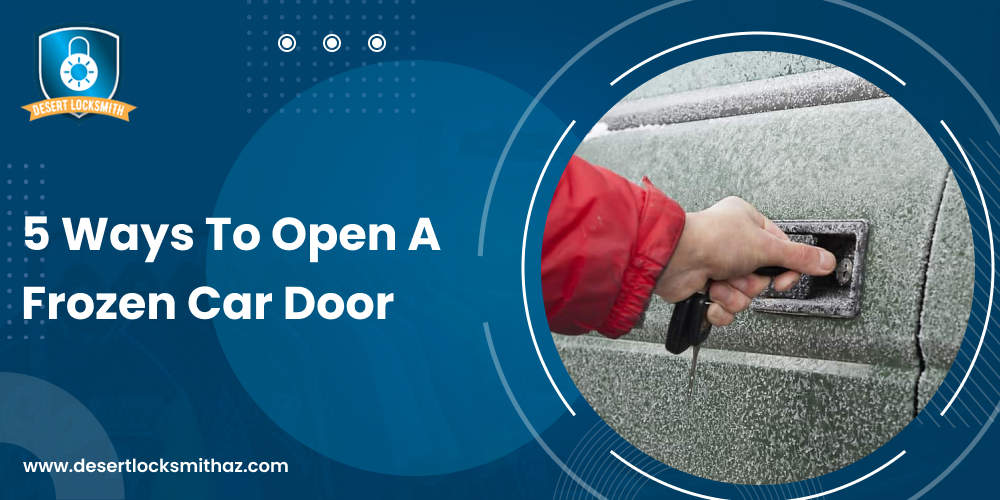The last thing you want to deal with on a snowy Monday morning is a frozen car door. If the Monday morning blues weren’t enough, you now have to deal with a jammed car door to get to work. Agreed, it can be quite frustrating to try and get your car door open on a cold, windy morning, but it is not impossible.
Frost and moisture in the snow can jam the lock and its mechanism. If your lock was working perfectly before the snow, it is quite easy to identify the reason for a jammed car door. One way to gain access is to try opening the other front door and call for a car locksmith after work. If that doesn’t work, you can try these 5 ways to open a frozen car door.
Isopropyl Alcohol
This chemical has a lower freezing point than water and has de-icing properties similar to salt. This is a readily available chemical, though most of you might not have heard about it. Isopropyl alcohol is found in many products that include hand sanitizer or rubbing alcohol. However, not all sanitizers contain this chemical.
Nevertheless, it makes sense to have a bottle of this chemical with you at home, as this alcohol can remove moisture as it evaporates quickly. All you gotta do is to apply this alcohol to the frozen car door and attempt to open it. You will gain access to it in most cases.
Vinegar
If you do not have Isopropyl alcohol at home, using vinegar is an alternative. However, there are certain pitfalls- it can yellow the door’s glass and can damage the paint, not to mention the strong smell that can take some time to dissipate.
The ideal way to use vinegar is by diluting it with water. Use three parts vinegar with one part water and apply this to the door. You can also spray it on the keyhole for better results.
De-icer
If you are not in a position to use home remedies, a branded de-icer is an ideal solution. Most of these De-icers use calcium chloride which is known to lower the melting point of water and prevent the water from refreezing.
Chemical deicers are a better solution as they absorb the water from the door lock mechanism. Isopropyl Alcohol and Vinegar just melt the ice without clearing the water, that’s why car locksmiths prefer using these products. However, these aren’t readily available at retail stores, you have to get one from a specialty store. Also, check the labels for any warnings about its use as some chemical de-icers can harm metal surfaces.
Ice scraper
Though this may seem an obvious way to defrost your car door, it can cause the most damage. Chipping away ice may not always work especially if the ice has formed inside the door, on the locking mechanism, or in the door’s crevices.
This will work only when you can see the freezing on the door. Though you are scraping off the ice on the door, there could be chances when a force applied can damage the door.
If you are scraping off the ice from the door latch, you risk damaging the paint and indenting the metal.
Heat
Many people tend to apply hot water to the frozen car door to open it. Others try doing so with a hairdryer or a heat gun. Though the latter works, you have to be careful not to damage the locking mechanism or wires in the door.
Hot water is not recommended as the resultant water can re-freeze and damage the locking mechanism. Some people even heat the key to release the frosting inside the lock mechanism. Though this can work, ensure you do not overheat the key or it can damage the lock further. In essence, if you are using heat to defrost your car door, do it carefully, ensuring you use ‘warm’ air or water, not ‘hot’ air or water.
In Conclusion
Though most cases of frozen car doors do not require a locksmith service, you have to be careful when trying to DIY. If things get out of hand, you will have to consult a locksmith who’d help you gain access to your car without damaging the door.

